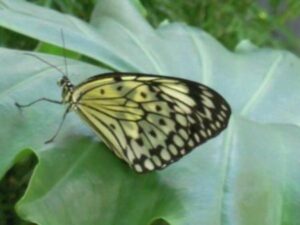Organic Gardening as a Much Needed Oasis for Birds and Insects

Many people not only want to have a beautiful garden to enjoy, but create it for the wildlife in their area to enjoy as well.
Huh? Invite squirrels and birds to eat my garden? Well, yes, actually. While millions of gardeners constantly do battle with animals and other critters to keep their garden intact, some people actually design their gardens with the expectation that their plants will be munched on! Why on earth would people do this?
Making Space for Nature
Well, the key is the word “earth.” With society growing at an ever-expanding pace, the natural environment for animals is shrinking more and more everyday. Creating a backyard oasis for birds, insects and other wildlife in your area is an excellent way to help protect these suddenly homeless creatures, and gives them the life-sustaining environment that they need to survive. So don’t just create a garden for yourself, create it for the animals in your area.
Gardening to attract wildlife is not a new idea, but is a philosophy that is becoming more widespread as more and more people begin contributing to making this planet a better place to live. Plus, you get the enjoyment of watching the fluttering of butterflies and the antics of birds as they visit your garden. So, how do you create a “habitat” garden for wildlife? Read on to find out.
How to Make Your Own Habitat Garden
Just like us humans, all animals, birds and insects have three needs: food, water and shelter.

First, think of the group of animals for which you’d like to create an environment. Butterflies? Frogs? Birds? From there, research what plants and types of shelter they like, and go from there.
The best way to start is by choosing local plants that are a food source for the wildlife in your area. Remember, it’s not only local wildlife that is losing their habitats, it is also the native plants. Growing local plants will not only be a natural food source for the local critters you wish to attract, you will also be growing plants that are made for your climate and soil. This means less watering, disease and maintenance, as they will better be able to thrive than a species not made for your area.
Plan for Food, Water and Shelter
For food, think of nectar-producing plants to attract butterflies, hummingbirds and bees. Fruit-bearing plants such as berry bushes and nut trees will attract a wide variety of birds and other animals, and can usually be grown quite easily. Conversely, if you wish to keep certain pests out, make sure not to grow certain plants that will attract them, or add plants nearby that will repel them.
Next, think of water. Animals like birds bathe just as frequently as us, so bird baths are a great source of drinking water as well as areas to bathe in. Insects like butterflies need puddles to drink from, and wetland creatures like frogs and other amphibians will love ponds.
Finally, think of shelter. Bird houses and thick trees are wonderful for birds, provided they are safe from cats. Butterflies will rest within certain plants, and an old log or dead tree is a magnificent resort for a variety of other creatures. To create that richness for your habitat garden, plant food sources and position water near your shelter. For instance, to plan for a successful butterfly garden, butterflies will need a type of plant for shelter, one for food, and another plant to lay their young. Group these near each other to help your visitors stay and thrive.
To keep your garden well cared for and safe for your visitors, use only organic materials and minimize the use of pesticides in your garden. Plan on attracting predator insects to get rid of harmful pests to your plants (again, mainly nectar-producing species), and use organic fertilizers like compost and manures to maintain the richness and health of your soil. This will help to keep your garden oasis balanced with nature, and is safe not only for you and your family, but for the birds, insects and other wildlife that you wish to attract as well.
Chris Molnar happily toils in his garden and is the editor of Goorganicgardening.com, a website with resources on organic gardening. He has co-authored a book on how to organic garden, and is currently building a butterfly garden for the enjoyment of his three year old.

